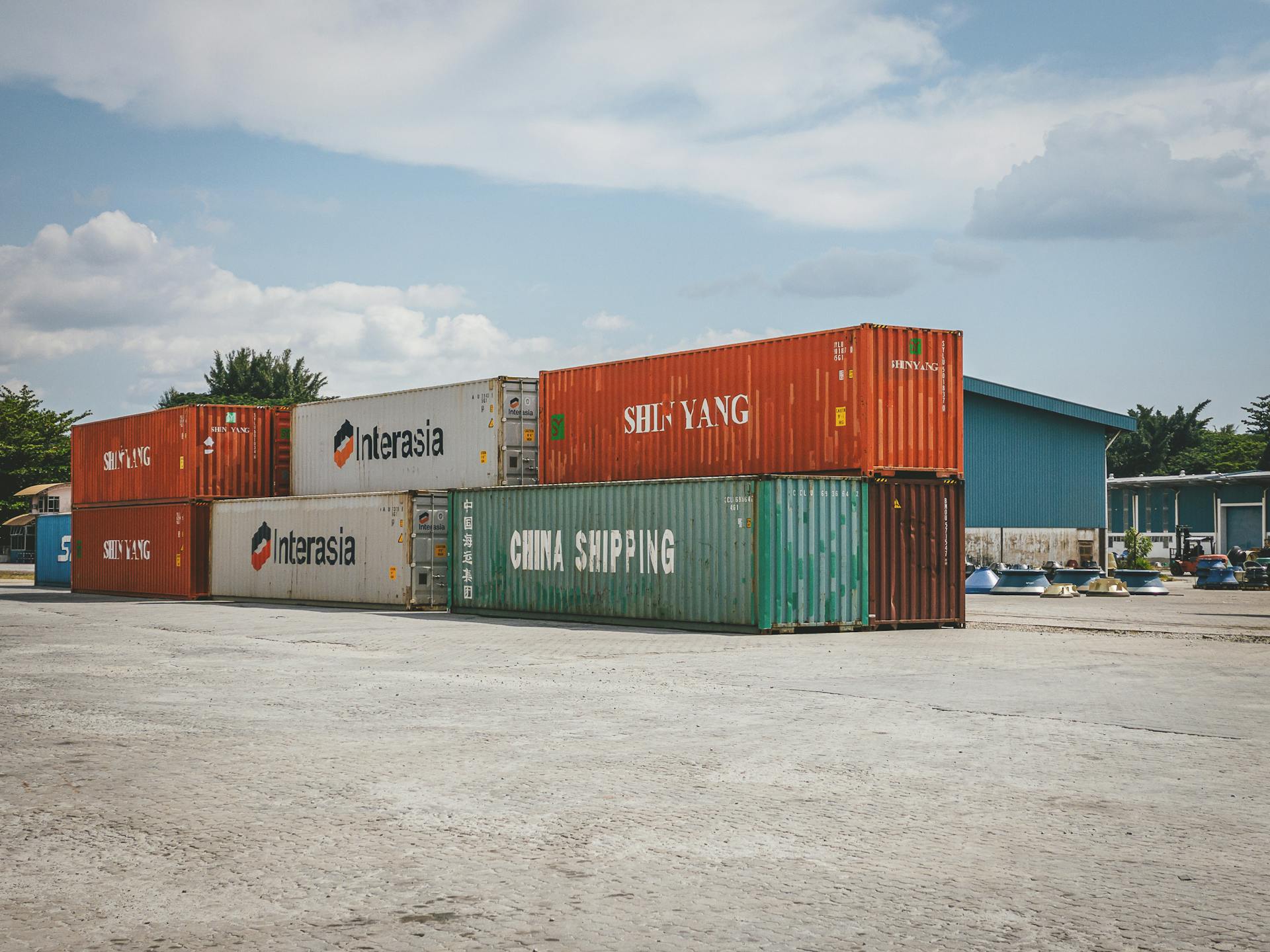
Sblc scams are a type of financial scam that involves the use of standby letters of credit (SBLCs) to deceive victims.
SBLCs are legitimate financial instruments used to guarantee payment for goods or services, but scammers often use fake or stolen SBLCs to trick people into sending money.
Victims of sblc scams often report losing large sums of money, with some cases involving losses of over $100,000.
To stay protected, it's essential to understand how sblc scams work and the warning signs to look out for.
What is an SBLC?
An SBLC, or Standby Letter of Credit, is a guarantee issued by a bank on behalf of a client, ensuring payment to a beneficiary if the client fails to fulfill their contractual obligations.
This guarantee is issued by a bank, which means it's a serious financial commitment that requires a significant amount of collateral.
A Standby Letter of Credit acts as a safety net for the beneficiary, providing financial security in case the client defaults on their obligations.
It's a critical component in many business transactions, particularly in international trade, where the risk of non-payment is high.
The bank's guarantee is only triggered if the client fails to meet their contractual obligations, at which point the bank will pay the beneficiary the agreed-upon amount.
How to Avoid SBLC Scams
If an SBLC offer seems too good to be true, it probably is. Scammers prey on individuals' desire for quick and substantial profits, enticing them with unrealistically high returns that are simply not achievable in legitimate financial transactions.
Unsolicited offers are a major red flag, often coming through unsolicited emails, phone calls, or social media messages. Be aware of the following points when encountering such offers: too good to be true, lack of transparency, pressure to act quickly, and lack of supporting evidence.
Legitimate financial institutions are transparent about their investment strategies and are willing to explain the process in clear terms. Scammers, on the other hand, often avoid providing detailed information about how to get the instrument issued.
If an offer requires upfront fees or payments, be cautious. Legitimate financial institutions typically structure their fees as a percentage of the transaction value or based on specific milestones within the transaction process. They generally do not require upfront fees or payments as a condition for initiating the SBLC transaction.
Here are some key points to consider regarding upfront fees or payments:
- Unusual payment requests: Legitimate financial institutions typically structure their fees as a percentage of the transaction value or based on specific milestones within the transaction process.
- Fee justifications: Scammers may provide various justifications for the upfront fees, but these explanations are often vague or lack transparency.
- Multiple fee requests: Scammers may attempt to extract money by requesting multiple upfront fees throughout the transaction process.
- Pressure to pay quickly: Scammers often create a sense of urgency, pressuring victims to make immediate payments.
- Absence of refund guarantees: Scammers rarely offer refund guarantees for upfront fees or payments.
- Verification of fee structure: Before making any payments, conduct thorough research and verify the fee structure with multiple reputable sources.
To stay safe, research and verify any institution or individual offering SBLC services. Be skeptical of unsolicited offers and insist on reviewing all relevant documentation related to the SBLC transaction.
Staying Safe and Reporting
Research thoroughly before engaging with any institution or individual offering SBLC services. Verify their credentials, reputation, and track record by consulting with trusted financial advisors or legal experts if needed.
Beware of unsolicited offers, as legitimate financial institutions don't initiate contact without prior communication. Unsolicited emails, messages, or phone calls claiming to offer SBLC services are often a red flag.
Verify all relevant documentation related to the SBLC transaction, looking for authenticity and carefully examining the terms and conditions. If the terms seem unclear or overly complex, seek professional advice.
Legitimate banks and financial institutions charge fees as a percentage of the transaction value, not as upfront payments. Avoid any requests for upfront fees, as they are often a telltale sign of a scam.
Conduct a thorough background check on all parties involved in the transaction, including the issuing bank, intermediaries, and beneficiaries. Verify their legitimacy and ensure they are registered and regulated by appropriate authorities.
If you're unsure about any aspect of an SBLC transaction or suspect potential fraud, consult with a legal professional experienced in international financial matters. They can provide guidance and help protect your interests.
If you have fallen victim to an SBLC scam or have encountered suspicious activity, report it to your local law enforcement agencies, relevant financial regulatory authorities, and fraud reporting platforms.
SBLC and the Law
SBLCs are not a type of currency or commodity, but rather a financial instrument used to facilitate international trade.
In the United States, SBLCs are governed by the Uniform Commercial Code (UCC), which outlines the rules and regulations for the use of these instruments.
SBLCs are typically issued by banks and other financial institutions, but they can also be sold or traded on the open market.
The value of an SBLC is determined by its face value, which is the amount of money it represents.
SBLCs are often used as collateral for loans or other financial transactions, but they can also be used to secure other types of obligations.
In the event of a dispute over an SBLC, the UCC provides a clear process for resolving the issue through the courts.
SBLCs are not insured by the FDIC, which means that if a bank fails, the value of the SBLC may be at risk.
The use of SBLCs in international trade can help to reduce the risk of non-payment by the buyer, but it can also create opportunities for scams and other types of financial abuse.
Sources
- https://www.linkedin.com/pulse/sblc-scam-alert-what-you-need-know-stay-safe-mashuk-rahman-9dbzc
- https://www.justice.gov/usao-edva/pr/fraudsters-sentenced-standby-letters-credit-scheme-1
- https://www.tradefinance.training/news/news-categories/standby-letters-of-credit-and-the-fraud-exception/
- https://www.lexology.com/library/detail.aspx
- https://sinereclaim.com/dont-fall-for-these-common-sblc-and-loan-scams-a-warning-for-investors/
Featured Images: pexels.com


